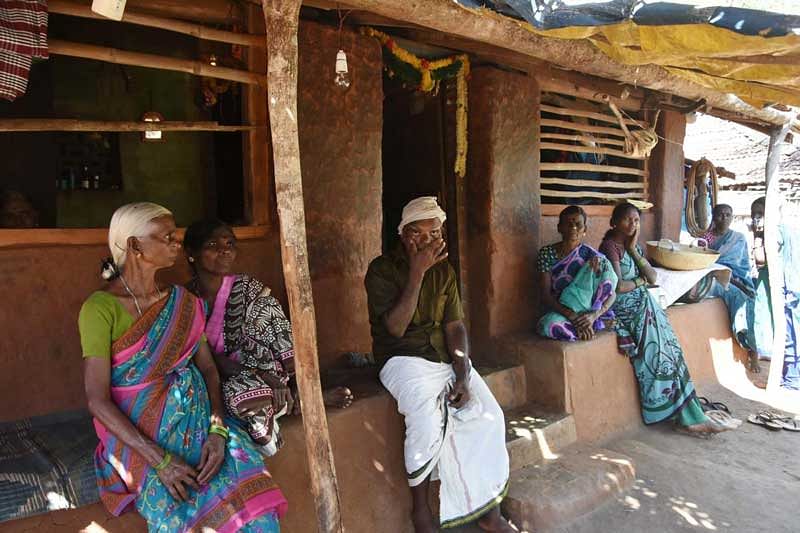
Amidst political stalemate, Karnataka is gripped by the fast-looming threat of debilitating vector-borne epidemic — Kyasanur Forest Disease (KFD), commonly referred to as ‘monkey fever’.
Reported first in 1957 in the Kyasanur forest of Sorab taluk in Shivamogga district, the disease was initially regarded as less dangerous as it had been confined only to a small demographic section. But now, KFD has taken a scary form as it is spreading fast in the Malnad and coastal districts of Karnataka. In the first few weeks of its seasonal outbreak, the disease has killed seven people and infected hundreds of villagers living in and around the forests.
The health department is caught off guard with the outbreak of monkey fever this year as it has unleashed a macabre tale of death in a relatively unknown area. A febrile illness among humans linked to the sudden death of monkeys in the wild has come back with more virulent features this time.
A cross section of samples drawn from multiple locations around the Aralagodu area of Sagar taluk last month and tested at the National Institute of Virology, Pune has revealed that the disease has come back with an increased virus load this year! While the major flare-up, in its history of 61-years of outbreak, was in 1983-84 killing as many as 136 people in and around Belthangady taluk of Dakshina Kannada, it has shown a similar trend this year in a relatively new environment, with several monkeys being tested positive for the KFD virus with every passing day.
While the health department has been successful in arresting the mortality rate due to rapid rounds of vaccination across the taluk covering over 15,000 population in less than a few days since the outbreak, and sanitising the region with increased surveillance, the initial damages are still considered to be a lapse on the part of the department owing to its skewed policies, lack of better medical facilities and absence of research activities due to the lack of funds by the state government.
“There is hardly any effort by the state government either to document or study the outbreak of the disease in a systematic way. Except for seasonal vaccination drives and distribution of DMP (tick repellent) oil, there is no measure by the government till date to address the epidemic,” rues a member of KFD Janajagruthi Okkoota, which is working towards the eradication of the disease in the Malnad region.
Multiple reasons
Dr Kiran S K, field officer at Aralagodu PHC who along with an army of health workers and doctors is leading the health department’s battle against the dreaded disease, felt there could be multiple reasons for the outbreak. “Villages around Sagar taluk have not been vaccinated against the disease in the recent past even though the KFD’s outbreak was felt in the adjoining taluks. Generally, vaccination is taken up in those regions where it has repeatedly raised its hood. But Aralagodu has no history of KFD. This, perhaps, is one of the major reasons for its virulent outbreak this year,” he told DH even as he supervised treatment facilities at the Aralagodu Primary Health Care (PHC) centre.
Adding to the woes, a study conducted by the entomologists in the region has also revealed that villages in the region accounted for a high density of ticks—the transmitters of KFD virus from monkeys to humans. He also added that the outbreak in this region, which is predominately safeguarded by water bodies all around, has proved yet another factor that virus has been around.
“We don’t see any large-scale migration of monkey population from the affected region to this area as it is surrounded by water bodies. But the way it has struck with its virulent properties has proved that the region had been a reservoir of the virus with dormant characteristics. Yet, it is still elusive for us to ascertain the actual trigger which paved way for the panicking outbreak,” Dr Kiran explained.
Dr Munivenkata Raju, another health officer posted at Sagar, said, “The only striking feature about KFD is that earlier there was no reportage but now due to increased media attention and awareness among the public, people have been coming forward reporting about monkey deaths. This has helped the department in planning the prevention activities and further arrest its spread.” The outbreak has gripped the region in a fear psychosis that people who were hitherto reluctant to get vaccinated are coming forward on their own to get the vaccine.
Alarming sign In spite of the health department’s efforts, the disease is spreading its tentacles in an unimaginable way encompassing new geographical terrains. “The death of infected monkeys is an alarming sign as the ticks on their body fall to the ground and multiply in thousands to spread the virus among humans who contract it through a tick bite.
Visceral samples drawn from dead monkeys have shown positive for KFD in areas like Shikaripura, Byndoor, Kundapurand, Udupi taluks prompting us to take up vaccination drives in 5 to 10 km radius,” Dr Kiran explained.
While there is no cure for KFD, the medical intervention is purely based on treating the related symptoms. “KFD is a biphasic illness with symptoms exhibiting in two stages. Initially, the patient gets admitted for fever, chill and headache and discharged after a week-long treatment. After a fortnight, with the subsiding fever and chill, the neurological symptoms — mental
disturbance, blurred vision and tremors coupled with gastrointestinal issues popup. In one of the cases we treated, we were about to discharge a patient as she seemed to have recovered. But, suddenly she developed neurological symptoms resulting in the death,” explained Dr Raghunandan, District Surgeon at McGann Hospital in Shivamogga.
According to Dr S Sajjan Shetty, Joint Director, National Vector Borne Diseases Control Programme, KFD is seen only between December and May. “The disease-causing ticks die during monsoon. It is only during their nymphal stage that they inflict major damage. While we are providing treatment, we have also made arrangements for people to get admitted to Kasturba Medical College (KMC), Manipal for advanced treatment. More health professionals have been deployed in the region for surveillance and treatment. Mobile units have been patrolling the area and officials have been rushing to the spots where monkey deaths are reported by the villagers,” Dr Shetty explained.
In fact, the department has stationed three advanced ambulances with ventilators at Aralagodu PHC. They have been ferrying KFD patients to Manipal twice daily.
“On an average, we go to Manipal twice in a day with at least four to six patients, though initially, the number of patients was more,” said an ambulance driver. Interestingly, the
PHC has posted a notice about the list of documents required for admission at KMC Hospital which is 80 km away. Both the cost of the treatment and ambulance charges
are borne by the state government. As the mortality rate due to KFD touched 8 to 10% this year, people are refusing to risk themselves and any patient with symptomatic
fever is being ferried to Manipal without a second thought. While the community health workers are carrying out door-to-door inspection about the condition of people by drawing blood samples from people with related symptoms, senior health officials and veterinarians have been attending to monkey deaths and conducting autopsies. Besides, doctors are sanitising the areas around the carcass of the monkey by spraying malathion powder, a tickicide, in the 50 to 75 metre radius to kill the disease-causing ticks withered away from the carcass.
